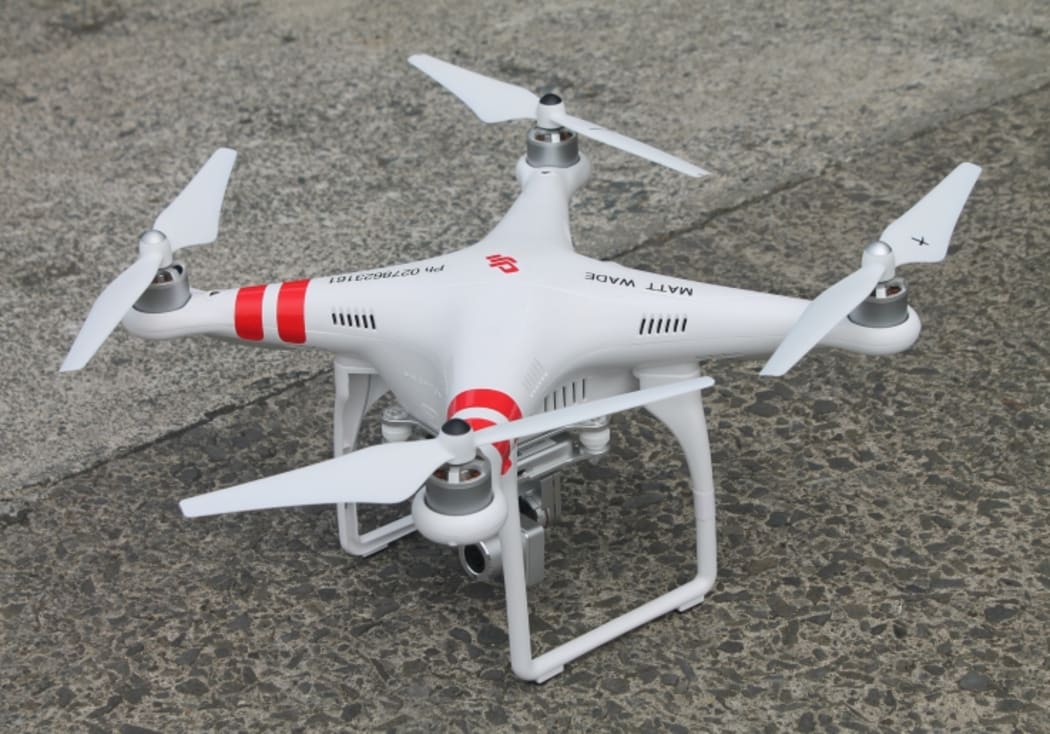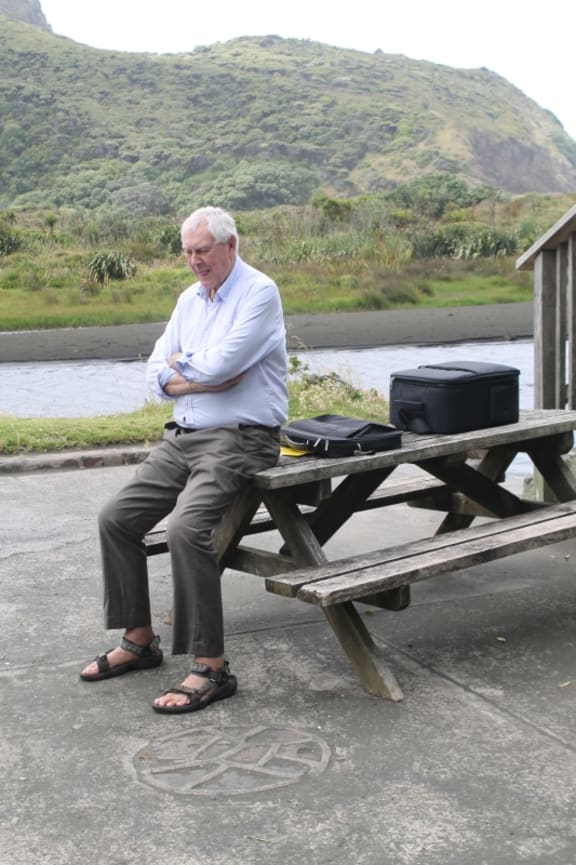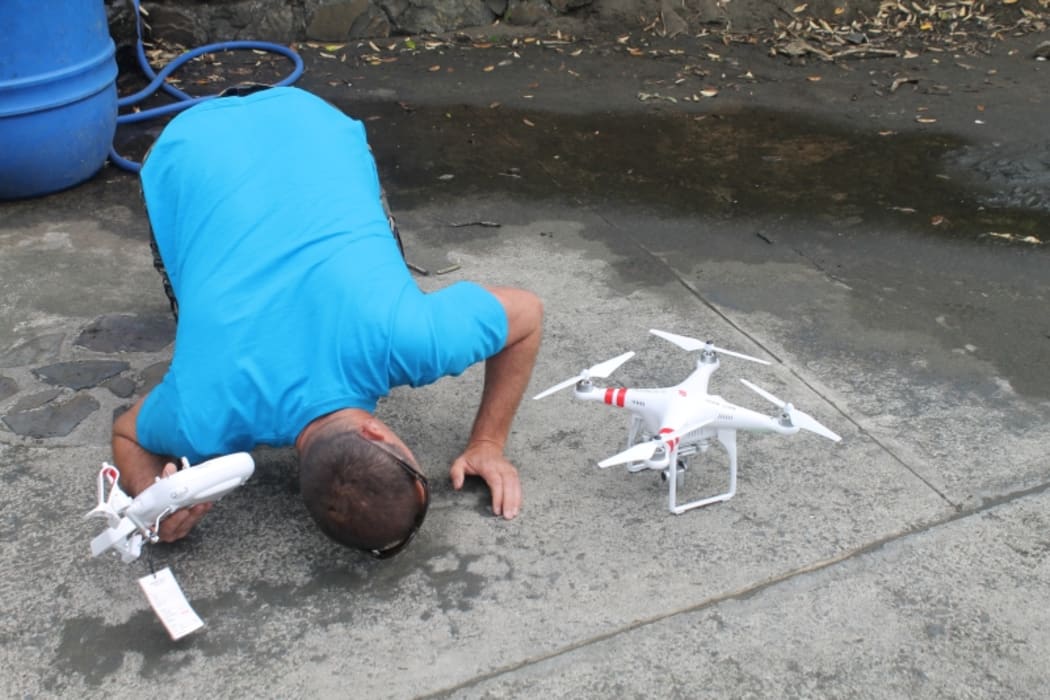
Karekare Surf Life Saving Club's new drone. Photo: RNZ/Justin Gregory
The Karekare Surf Lifesaving Club has just one goal when it comes to trialling their new surveillance drone;
Bringing back people alive. It’s as simple as that.
Sir Bob Harvey is a life member of the Club and says that over the eighty year history of lifesaving on Karekare Beach, they have always tried to move with the changes in technology.
“[It was once] the reel on the beach with the old cork belt, then it moved to a safety belt and then in the seventies… a revolution happened when we brought in helicopters…then jet boats – exciting, but [they] didn’t work, really; IRBs (inflatable rubber boats) and now this is the next step - of surveillance and speed.”

Sir Bob Harvey. Photo: RNZ/Justin Gregory
Surveillance and speed - two crucial factors when it comes to saving lives in the surf.
“There’s a golden moment in rescues, you’ve got to seize it quickly… you’ve got to know exactly where you are in a rescue and where people are in rips. They can move so fast.”
It seems Sir Bob can also move pretty fast when the need arrives. His idea to use drones to improve surf lifesaving techniques came out of a moment of pure opportunism. Last year Auckland Mayor Len Brown was gifted a drone by a Chinese technology company. Sir Bob spotted it, immediately saw the possibilities, and asked if the club could have it. The drone on trial today is not the one gifted by the Mayor, which may not have been powerful enough to cope with the windy conditions found on Auckland’s west coast beaches. And as Matt Wade, Karekare Surf Club Patrol Captain and the operator of the drone explains, there are other issues to take into account, too.
“We’re lucky enough to have magnetic black sand out here and these are electric motors [powering the drone]. If this thing tips up it’ll go straight into those motors because they’re magnets.”

Club Patrol Captain Matt Wade closely inspecting the drone prior to takeoff. Photo: RNZ/Justin Gregory
Matt flies the drone using an app on his smartphone and once up in the air, relays video to either the phone or a monitor. The drone can climb to approximately 400 feet, giving a very wide view of the surf. Drones have been used by lifesavers in Australia for both shark spotting and search and rescue operations. Because the drone takes a bit of time to launch and can only fly for around twenty minutes at a time, Matt Wade imagines it being used here not in response to an emergency but more for training, determining the safe swimming areas and for patrolling areas outside of the flags.
“The Cauldron area has got a very sheer cliff face, no beach front to it and the drones would allow us to get along [there] if we had someone stranded on the cliff face. Whilst lifeguards are trained to look for where the rips are and the best place to set the flag up, having a drone over the top just reconfirms you’ve got the best spot on the beach. It’s very easy to see the wave direction and the current direction from the air.”
There is a PR value to having a drone as part of the Club’s equipment, too. Sir Bob Harvey hopes it will attract younger volunteers.
“The young men and women that we recruit are very smart. And they get bored pretty easily. Surf lifesaving struggles sometimes to keep a volunteer base. I saw this as terrific magnet for recruitment of young people who say ‘surf lifesaving is going high tech. That’s for me’.
Matt Wade and the other club members are spending the summer assessing the drone’s capabilities, training members in its use and trying to establish its place in their operating procedures. To date the drone has not been used in any lifesaving incidents but Karekare Beach’s reputation for being wild and dangerous is well earned, and so it can only be a matter of time before the Club’s new drone has a chance to prove its worth and to assist the lifesavers in bringing back people alive.

